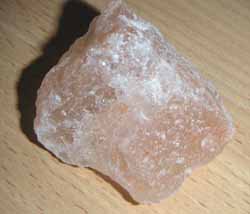Susan has suggested that the water drop needs to interact with 'something' to construct a metaphor. I agree with this. I have ideas of using rock salt as a co-actor to the droplet.

Excerpted from Wikipedia (http://en.wikipedia.org/wiki/Salt_of_the_earth ): "...The Bible contains numerous references to salt. In various contexts, it is used metaphorically to signify permanence, loyalty, durability, fidelity, usefulness, value, and purification..." Additionally the metaphor figures in Hebrew metaphysics as the covenant of salt.
All the sacred gifts that the Israelites set aside for the Lord I give to you, to your sons, and to the daughters that are with you, as a due for all time. It shall be an everlasting covenant of salt before the Lord for you and for your offspring as well. (Numbers 18:19)
In Kabbala it is recognized as a tool of immutability with properties that can destroy as well as preserve.
Science shows us that di-electric properties are dependent on ionized substances like salt. The supposition that the first life on planet earth originated from the sea is no surprise due to the fact that the salinity of the sea led to complex energy transferences. Salts are absolutely necessary to life and an eletrolyte deficiency can cause severe medical problems or death. Conversely an over abundance of salt will create hypertension, dehydration and can lead to death as well.
Salt's necessity it has shaped society through taxes, trade, remember the spice trade from the Mid-East during the medieval period.
Some dubious scholarship claims that a famine of salt caused insanity and led to human slaughter during the Middle Ages in order to consume the 'salty flesh'. This is purported to have given birth or reinforced the vampiric legends of blood consumption. The research looks very dubious when I tried to cross reference this.
Salt therefore becomes the a metaphor for life, the body, and sacred spiritual existence as well. I am trying to track down a fair size piece of naturally occurring rock salt. The health food/alternative medicine industry sells Himalayan rock salt. Its' proponents ascribe to the medical and spiritual properties of this mineral. I am intrigued by it because it has a pinkish cast from the Iron content in the deposits. This is formally interesting to my eye and eludes again to blood because of the salt in the fluid and hemoglobin is an iron compound as well.

I bought a separation funnel as my clepsydra. This precision instrument is made for distilling chemistry. I am intrigued about using the highly fabricated device as an early technological horology instrument. In a way it seems anti-technological.






